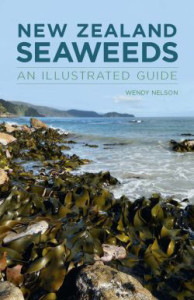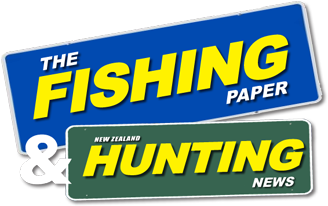Book Reviews » New Zealand Seaweeds
New Zealand Seaweeds: an illustrated guide by Wendy A. Nelson
Te Papa Press
RRP $80 (available from Te Papa website store)
Reviewed by Imo McCarthy
Have you ever been disappointed to find that it isn’t a small kahawai attached to the lure you haul in but a large lump of seaweed? Toss it over the side – but what was it? What sort of seaweed? This book will help you find the answer. 
Butterfish are found lurking among seaweed but they are fussy about those they feed on. They particularly like the large brown seaweed Ecklonia, which is beautifully illustrated in this book. If you can find that seaweed maybe the fish will be lurking!
Kids love rock pools and scavenging on the beach. Their finds will include all three types of seaweed, green, brown and red and this book will help them to identify them. Maori gathered kelp for making poha, bags to hold mutton-birds and fish. Karengo, a red seaweed found in intertidal areas is tasty and a great source of protein. Many of us were brought up on Seameal Custard made from seaweed! Wendy Nelson’s book features blocks of text at the bottom of some pages telling the story of our use and abuse of seaweed and its conservation status.
New Zealand Seaweeds: An Illustrated Guide, published by Te Papa Press, is the first photographic identification guide to our seaweeds and includes more than 500 illustrations. The book concentrates on the most commonly found seaweeds in New Zealand. Each seaweed examined is illustrated with underwater or coastal photographs and some are accompanied by detailed paintings from Nancy Adams’ seaweed book first published in 1994. The introduction to the book covers the plant group that seaweeds belong to and some information about their lifestyle.
A few exotic species are included in the book. In Nelson we have the Asian kelp Undaria pinnatifida, which is spreading around our coastline with uncertain consequences for native seaweeds and animals. Recognising and reporting sightings of this species is important in trying to control its spread.
Seaweeds are the base of many food webs in the ocean. Shellfish and crustaceans feed on them and they in turn become food for carnivorous fish. Wendy Nelson tells us that many fish and invertebrates find refuge, habitats and disguise among seaweeds that provide plenty of surfaces upon which creatures can settle. The health of our coasts and rivers directly affects these relationships and this book helps to make us aware of the great diversity of seaweed around our shores.
It is an expensive book, $79.95 so I probably wouldn’t take it to the beach but a few photographs on the digital camera would be enough to help me identify these plants when I got home. It is a user-friendly reference book filling a gap in our shelf of marine texts.

